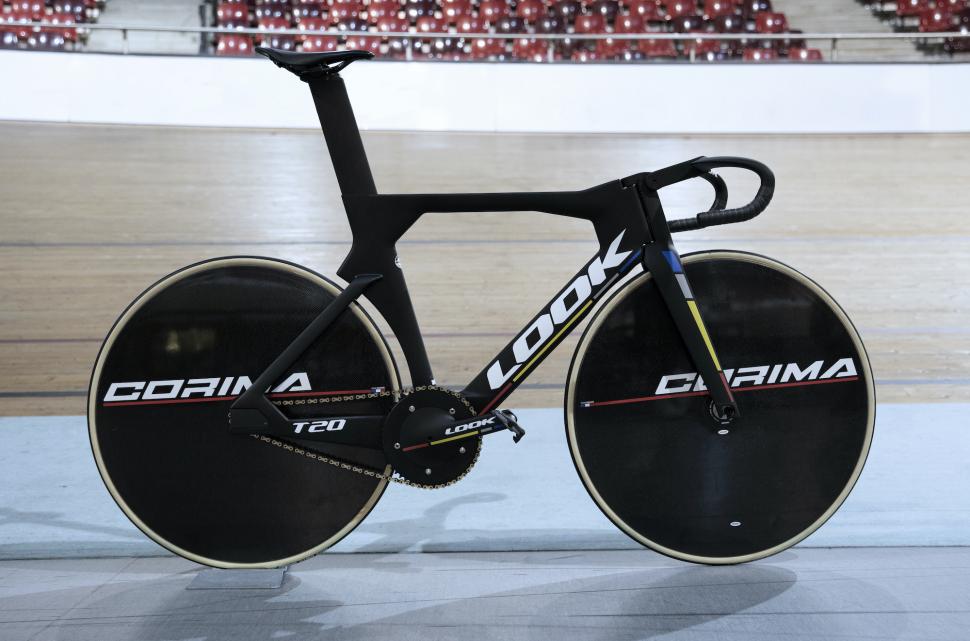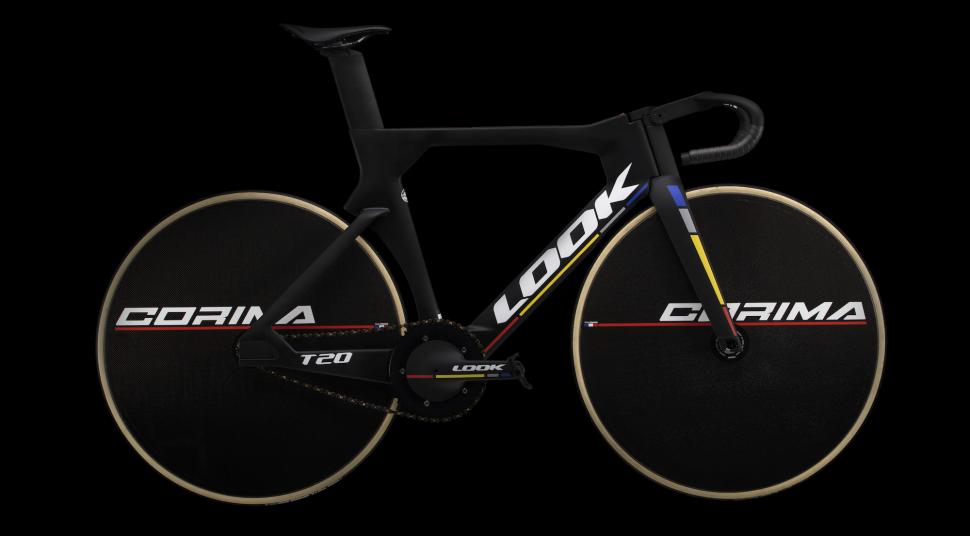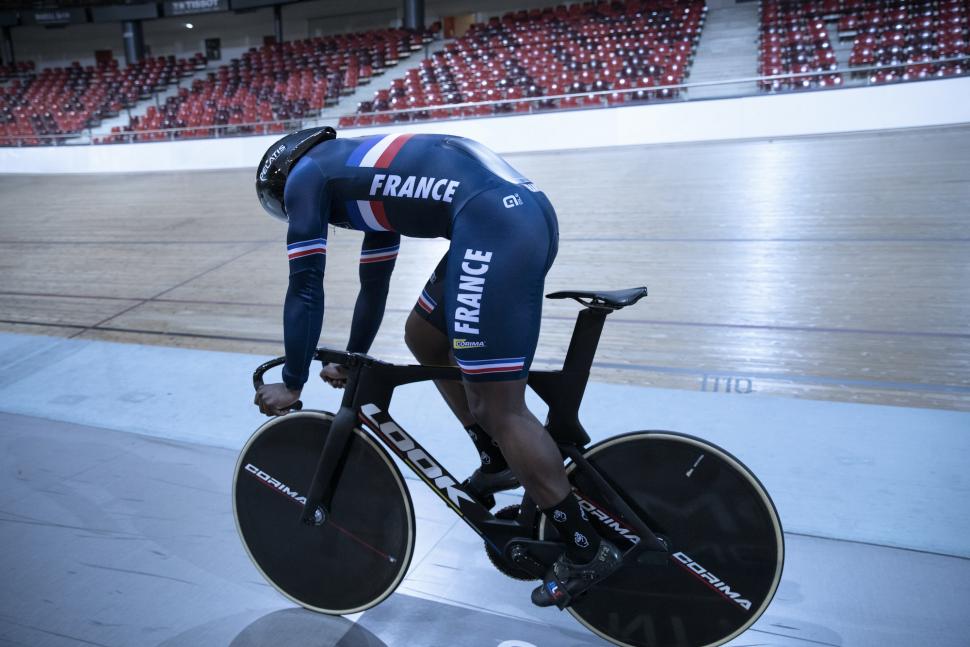- News
- Reviews
- Bikes
- Accessories
- Accessories - misc
- Computer mounts
- Bags
- Bar ends
- Bike bags & cases
- Bottle cages
- Bottles
- Cameras
- Car racks
- Child seats
- Computers
- Glasses
- GPS units
- Helmets
- Lights - front
- Lights - rear
- Lights - sets
- Locks
- Mirrors
- Mudguards
- Racks
- Pumps & CO2 inflators
- Puncture kits
- Reflectives
- Smart watches
- Stands and racks
- Trailers
- Clothing
- Components
- Bar tape & grips
- Bottom brackets
- Brake & gear cables
- Brake & STI levers
- Brake pads & spares
- Brakes
- Cassettes & freewheels
- Chains
- Chainsets & chainrings
- Derailleurs - front
- Derailleurs - rear
- Forks
- Gear levers & shifters
- Groupsets
- Handlebars & extensions
- Headsets
- Hubs
- Inner tubes
- Pedals
- Quick releases & skewers
- Saddles
- Seatposts
- Stems
- Wheels
- Tyres
- Health, fitness and nutrition
- Tools and workshop
- Miscellaneous
- Cross country mountain bikes
- Tubeless valves
- Buyers Guides
- Features
- Forum
- Recommends
- Podcast
TECH NEWS
 PISTE T20_9
PISTE T20_9Look unveils new T20 track bike for 2020 Tokyo Olympics
Look has left it to the last day of the year to launch its brand new T20 track bike ahead of the Tokyo Olympics next summer. The new bike is lighter, stiffer and more aerodynamic, with a claimed weight os 6.8kg, and features new wheels with thru-axles developed by Corima.
The new track bike has been designed and developed in collaboration with the French Olympic track team and is made in France by Look using its own in-house carbon manufacturing facility.
Look is keen to remind us of its Olympic success in the press release. “Since Atlanta 1996, LOOK has collected 14 Olympic titles, and 43 medals in total,” the company proudly declares.
The T20 is an evolution of the previous Look track bike and much of the development has been to increase the stiffness and lower the weight, improving the stiffness-to-weight ratio. It’s claimed to be 800g lighter, 25% stiffer at the bottom bracket, 12.5% stiffer in the rear triangle and 12% stiffer in the head tube.
With the radical Hope HB.T taking a daring approach to aerodynamics, there has been much anticipation to how rival Olympic track teams would respond. The T20 is anything like as radical, but it is claimed to be more aerodynamic than the bike it replaces, with a claimed 11% reduction in drag.
The result of all these changes is a claim from Look is for a gain of 30 watts at full speed on the track, which it equates to a full bike length in a 200m sprint. Look doesn’t reveal any more data on how it achieved these figures so we can only take them at face value.
The handlebar and stem have been designed to fit seamlessly with the frame, and Look has developed a very rigid handlebar for sprinters, Madison and scratch racers, while pursuit riders will benefit from Look’s own Aeroflat bars and Aergo extensions.
Corima has been pulled in to offer a fully integrated approach with wheels developed specifically for the T20 frame and fork. Corma has developed new 4- and 5-spoke carbon wheels, as well as the Paracular and Lenticular monobloc wheels, that apparently optimise the T20’s aerodynamic profile.
Look and Corima have also developed front and rear thru-axle dropouts to ensure maximum stiffness along with improved aerodynamics. This integrated design leads to a claimed 12.5% increase in lateral stiffness.
The T20 will use the ZED carbon monobloc crankset first developed for the 2012 London Olympics which offers high levels of stiffness and easy crank arm length adjustment via the Trilobe technology.
“I am incredibly excited to race the T20 for the first time as I build towards the 2020 Olympic Games,” says Mathilde Gros, Tokyo 2020 Olympic Games hopeful and French Cycling Federation athlete. “LOOK has been a long-time partner of the French Cycling Federation, and that partnership has brought with it so many medals and victories over the years. I am looking forward to trying to write my own piece of history in Tokyo!”
The new T20 comes in four frame sizes with two ZED crankset options offering six crank length choices, 18 stem lengths ranging from 55-140mm in 5mm increments, and a new aero seatpost providing four mounting angles, which should all ensure it’s easy to customise the fit for different athletes.
You can buy the T20 with a Speed kit for £6,999 or a TT kit for £7,499. If you’re interested you can register that interest here.
The new T20 sure looks fast, but we’ll have to wait till next summer to see just how fast it really is.
David worked on the road.cc tech team from 2012-2020. Previously he was editor of Bikemagic.com and before that staff writer at RCUK. He's a seasoned cyclist of all disciplines, from road to mountain biking, touring to cyclo-cross, he only wishes he had time to ride them all. He's mildly competitive, though he'll never admit it, and is a frequent road racer but is too lazy to do really well. He currently resides in the Cotswolds, and you can now find him over on his own YouTube channel David Arthur - Just Ride Bikes.
Latest Comments
- slc 3 sec ago
Traffic management leading to congestion when the re-routed drivers prefer* to queue with their engines on, choking the school children and holding...
- PenLaw 20 min 50 sec ago
Lets face it, the antipathy is generated by and for big oil whilst cyclists are part of the few attempting to prevent runaway climate change and...
- bensynnock 36 min 1 sec ago
I've been seeing a fair few rabbits run out in front of me this last week, so I've been hopping actual bunnies.
- Bigtwin 1 hour 18 min ago
Discount eh? Screw you!
- David9694 1 hour 38 min ago
this one has (deservedly) turned-up today in car flips and car crashes into building
- Miller 2 hours 20 min ago
Their weather today is dismal anyway.
- quiff 2 hours 30 min ago
Hold your horses - some councils are authorised to conduct their own (more stringent) vehicle inspections for taxi use. Where that's the case,...
- brooksby 2 hours 58 min ago
I trust that you pointed at them while Muntzing? ...




Add new comment
9 comments
Probably did that sucking in of air thing whilst doing it.
He's had a look mate, that's good enough for me
Wow, I guess they better leave the frames at home then, now that you have spoken on the matter
Looks like a tower of power to me. It's curious how both this and the BC bike have that riser looking stem, you'd think that would be less aerodynamic than something flatter
With that seat tube height, a 7k torture device. A pillar of pain, saddle of suffering, a mount for masochists, and tube of torture.
Looks a lot better than that BC abomination.
But unlike you, anyone riding one of the new BC bikes (i.e. someone with a chance of winning an Olympic medal) won't be concerned about how it looks.
They will if it falls apart, which it looks like it might.
And what have you seen that brings you to that conclusion?